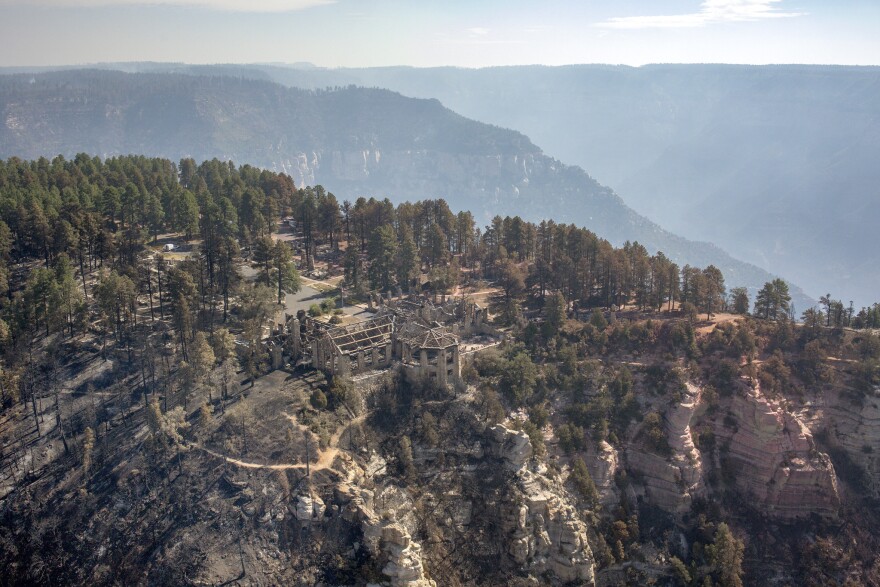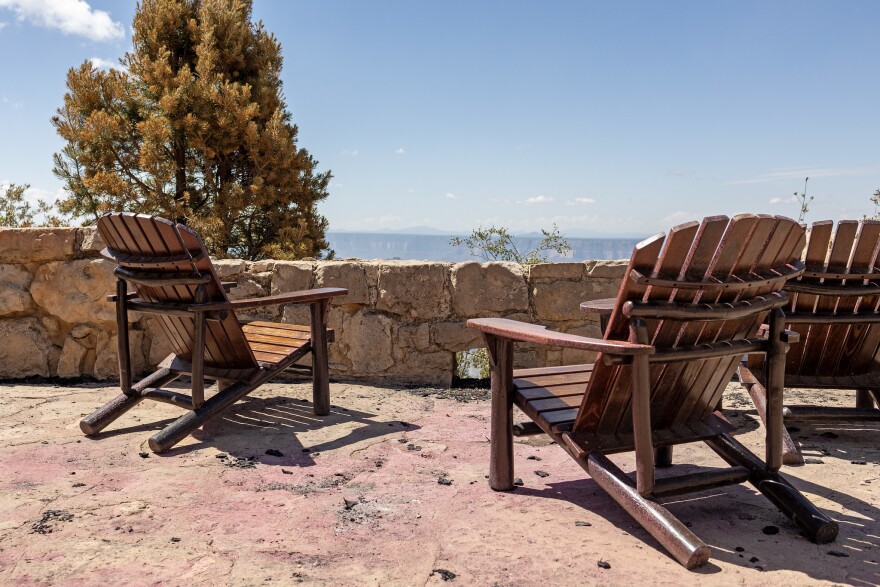The recent destruction of the Grand Canyon Lodge during the Drago Bravo Fire reminds author Scott Thybony how changes at the Grand Canyon often happen suddenly. And, as he says in this month’s Canyon Commentary, among the ashes, Thybony noticed how enough remains of the statue of Brighty the Burro to hold out a shred of hope.
As a guide, I once stood next to the Grand Canyon Lodge on the North Rim giving a geology talk. A group of canyon enthusiasts crowded around, facing the deep gorge opening below us. I explained how a major factor in its formation came from headward erosion. Tributary canyons fingered back into the plateau, eventually undercutting the massive cliffs and triggering a collapse.
At that moment an explosive boom came from the gorge as an immense slab of sandstone suddenly broke free. “Like that!” I said with a smile as secondary rockfall followed and a cloud of dust billowed upwards. All of us began laughing at the pure synchronicity of the moment.

Change, I’ve learned, comes suddenly at the Grand Canyon. A debris flow can churn down a wash creating a new rapid overnight, or rockfall can transform the face of a cliff in an instant. And change can come just as abruptly when wildfire rips through stands of 300-year-old trees.
A fast-moving fire recently hollowed out the Grand Canyon Lodge in a matter of hours. The first photographs showed it engulfed in an inferno of flames. Later shots recorded stone walls standing among the empty ruins, leaving enough room for memories to fill what had been lost. One photo circulating in the aftermath of the fire showed a pair of Adirondack chairs sitting remarkably unscorched on the terrace. I remember a woman standing perfectly still next to one of them for a full two minutes. She was holding her heart without saying a word, stunned by the view. The Grand Canyon Lodge provided a platform for moments like that.
When the Dragon Bravo Fire overran the lodge on July 12, I was on the South Rim watching the smoke rise and haze the air. Reports trickled in, only rumors at first, saying the lodge had been destroyed. They proved to be correct, and many of the North Rim structures had burned along with it. For years the great fear was that a quick-moving fire would cut off the only escape route, trapping visitors and workers alike. But it turned out everyone was safe. By chance, another fire was moving toward Jacob Lake to the north. It prompted an order to evacuate the North Rim before the Dragon Bravo Fire escaped containment and threatened the lodge.

People began asking if the life-size statue of Brighty the Burro had survived the firestorm. He had sat on his haunches in the Sun Room of the lodge for decades with his head turned to gaze out on a sunken world of dramatic gorges and massive buttes. Many children first learned about the Grand Canyon by reading Marguerite Henry’s Brighty of the Grand Canyon. Her book about a loveable, free-spirited burro became a bestseller and later a popular film. So many kids had rubbed the bronze nose of the statue for good luck, it was polished smooth. Over the years it became a ritual for wildland firefighters to also rub its nose, and sometimes to kiss another part of its anatomy, to ensure their safety.
When a photo arrived showing Brightly lying partially melted among the ashes, I wrote it off as a loss. A gaping hole in its side made it appear a mountain lion had taken it down. But on closer inspection I saw the head was mostly intact. What remained might just be enough, I thought, to let Brighty’s nose shine again someday.
Scott Thybony is a Flagstaff-based writer. His Canyon Commentaries are produced by KNAU Arizona Public Radio and air on the last Friday of each month.



